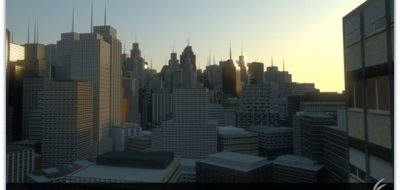Ingo Clemens, the BraveRabbit has released QTown 2, a city generation script for Maya. Ingo also posts a look into the inner workings of Qtown with Video Documentation and workflow for QTown 2. QTown is a non-commercial city generation script for Maya that creates procedural buildings and version 2.0 adds the functionality of automatically adding procedural textures to the created buildings.
QTown 2 new features include:
- automatically generated uv coordinates, organized in different uv sets for independent tiling every building is created as a separate structure with the option to keep it this way, to be able to move the buildings later for a more custom placement
- better performance, as the used memory is automatically released after the building process (can be turned off), because building hundreds of houses with uv mapping can be quite heavy on the memory
- included shader generation and texture linking for ready to render scenes
- city districts (only available with Maya 2012 and up) to produce a larger variety of house placements and easier assignment of different structures
- build-in presets with the ability to save custom presets
- all non-preset functions are stored in the user preferences
- editable file node names prior shader setup
- no limit to planar surfaces anymore. Detailed base geometry featuring hills and valleys (not too steep though) are considered valid. The placement of the buildings is based on the lowest bounding box extension of each polygon and makes building on landscapes much easier.
Ingo Clemens notes: “QTown 2.0 is a procedural city generator for maya. This video shows the main features of the tool as well as the general workflow. QTown 2.0 is a non-commercial mel script and available through the brave rabbit blog or creativeCrash, Find out more about the script here: braverabbit.de/?playground/??p=538“

